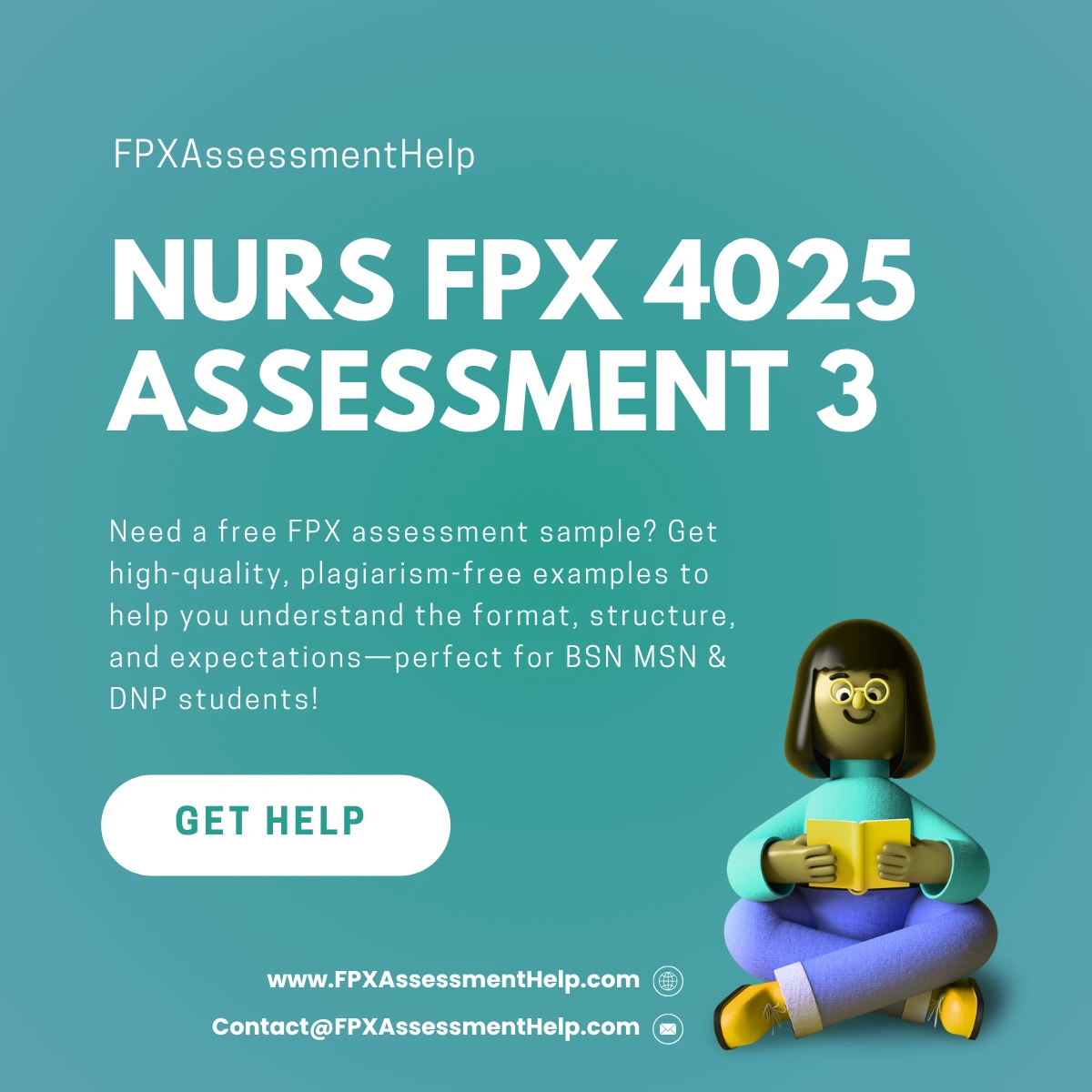NURS FPX 4025 Assessment 3 Applying the PICO(T) Process
Student Name
Capella University
NURS-FPX4025 Research and Evidence-Based Decision Making
Prof. Name
Date
Applying the PICO(T) Process
Chronic Obstructive Pulmonary Disease (COPD) remains a progressively debilitating respiratory condition, particularly burdensome among socially and economically disadvantaged populations. It is associated with substantial health care utilization, poor quality of life, and premature mortality. This paper applies the PICO(T) process to address a specific clinical issue in COPD care. A focused clinical question is developed to guide an evidence-based review, with attention to disparities and health outcomes associated with COPD. The purpose is to support informed decision-making and encourage patient-centered interventions through the integration of reliable, scholarly research evidence.
Pulmonary rehabilitation (PR) has emerged as a promising intervention to improve outcomes in individuals with COPD, yet implementation disparities persist. Utilizing the PICO(T) framework allows clinicians and researchers to structure questions that drive effective inquiry and improve evidence application in practice. By targeting frequent exacerbations and hospital admissions—critical issues in COPD management—this paper examines the comparative impact of PR against standard care through a focused clinical inquiry.
Diagnosis Overview and Disparities
COPD is commonly caused by prolonged exposure to harmful airborne particles and gases, notably cigarette smoke, environmental pollution, and occupational toxins. It encompasses two major conditions: emphysema and chronic bronchitis. COPD is marked by chronic airflow limitation, which progresses over time and leads to diminished respiratory function, chronic dyspnea, exercise intolerance, and repeated exacerbations. Long-term consequences include respiratory failure, pulmonary hypertension, and comorbid cardiovascular conditions (Jo, 2022).
Disparities in COPD outcomes are deeply rooted in social determinants of health. Vulnerable populations—including older adults, racial minorities, rural communities, and individuals with limited financial resources—face increased barriers to timely diagnosis and appropriate management. Factors such as lack of health insurance, reduced access to specialty care, transportation challenges, and limited health literacy contribute to delayed interventions and poor treatment adherence (Gaffney et al., 2021). These disparities not only worsen disease trajectory but also hinder equitable access to services like smoking cessation programs, diagnostic spirometry, and pulmonary rehabilitation. Targeted strategies are needed to bridge these healthcare gaps and support vulnerable individuals living with COPD.
PICO(T) Question Development
To address the ongoing clinical concern of recurrent COPD exacerbations, a specific research question was formulated using the PICO(T) format:
PICO(T) Question: In adults with COPD, does taking part in a structured pulmonary rehabilitation (PR) program, compared to routine care without rehabilitation, lower the frequency of acute exacerbations and hospitalizations over six months?
This question directs attention to a clearly defined population, intervention, and outcome, thereby establishing a framework for targeted investigation. The table below summarizes the PICO(T) components:
| PICO(T) Element | Description |
|---|---|
| P (Population) | Adults diagnosed with moderate to severe COPD |
| I (Intervention) | Structured pulmonary rehabilitation (PR) program |
| C (Comparison) | Routine care without structured rehabilitation |
| O (Outcome) | Reduction in acute exacerbations and hospitalizations |
| T (Timeframe) | Six months |
This structure facilitates an evidence-based approach for evaluating intervention outcomes and guides best practice recommendations in managing COPD patients.
Literature Search Strategy
A comprehensive literature search was conducted using databases such as PubMed, CINAHL, and the Cochrane Library, which are known for hosting peer-reviewed and clinically relevant studies. The search utilized specific keywords, including “COPD,” “pulmonary rehabilitation,” “exacerbations,” “hospitalizations,” and “standard care,” with Boolean operators (AND, OR) to optimize results. Studies were selected based on the CRAAP test criteria (Currency, Relevance, Authority, Accuracy, Purpose), ensuring the inclusion of credible, high-quality evidence (Muis et al., 2022).
The evaluation process included review of study design, recency of publication, journal reputation, and authors’ professional backgrounds. Only those articles meeting high standards of scientific rigor and directly related to the research question were included. This method ensured that the evidence used to address the PICO(T) question was both relevant and reliable.
Evidence Summary and Relevance
A total of four studies were selected to examine the clinical impact of PR on exacerbation frequency and hospitalizations in COPD patients. Each study contributes unique insights and supports the development of best practices for implementing PR in clinical settings.
| Author(s) | Study Design | Key Findings | Relevance & Credibility |
|---|---|---|---|
| Toubes-Navarro et al. (2023) | Cost-effectiveness study (N = 200) | PR reduced emergency visits by 42.5%, hospitalizations by 48.2%, and inpatient days by 46.6% within 12 months | Published in Annals of Thoracic Medicine; robust methodology and clinical relevance |
| Meneses-Echávez et al. (2023) | Systematic review | PR improves cardiovascular function and reduces readmissions in acute exacerbations | Peer-reviewed source with systematic analysis and objective synthesis of evidence |
| Nici (2021) | Observational analysis | Early PR within 90 days post-discharge reduces readmissions and long-term care dependency | Highly relevant real-world analysis; published in American Journal of Respiratory Care |
| Lee & Burge (2024) | Commentary with clinical evidence | PR reduces exacerbations and mortality; underutilization due to access and cost barriers | Reliable source in Chest journal; authors are pulmonary specialists; recent publication |
These studies confirm the positive effects of PR across multiple dimensions—clinical outcomes, economic benefits, and system-level efficiencies—making them highly applicable to the research question.
Analysis of Evidence
Collectively, the reviewed studies support the effectiveness of PR in mitigating the burden of COPD by reducing exacerbations and hospitalizations. Toubes-Navarro et al. (2023) demonstrated statistically significant reductions in healthcare utilization, indicating both clinical and financial benefits. Meneses-Echávez et al. (2023) provided a comprehensive review that linked PR to cardiovascular and functional improvements, enhancing patient resilience against future exacerbations. Nici (2021) highlighted the importance of timing, noting that early initiation of PR is critical to achieving optimal outcomes, especially in older adults. Finally, Lee and Burge (2024) emphasized broader implementation challenges, including insurance gaps and resource limitations, which contribute to the underuse of this proven intervention.
The overarching theme from these studies suggests that structured and timely PR programs are essential for improving COPD management. The assumptions underlying the studies include standardized access to PR, adequate adherence by patients, and consistency in program delivery. While these ideal conditions may not be universally present, the research still provides compelling evidence in favor of expanding PR availability and addressing barriers to access.
Conclusion
In conclusion, COPD represents a significant public health challenge, particularly for socioeconomically disadvantaged populations. The PICO(T) process facilitated the development of a focused clinical inquiry into the role of pulmonary rehabilitation in reducing acute exacerbations and hospitalizations. The review of high-quality evidence strongly supports PR as an effective intervention that enhances patient outcomes and lowers healthcare burdens. However, gaps remain in implementation and access, especially among marginalized groups. Addressing these disparities through policy, funding, and community health efforts is critical to ensuring that the benefits of PR are widely realized in real-world clinical settings.
References
Gaffney, A. W., Himmelstein, D. U., Christiani, D. C., & Woolhandler, S. (2021). Socioeconomic inequality in respiratory health in the US from 1959 to 2018. JAMA Internal Medicine, 181(7), 968. https://doi.org/10.1001/jamainternmed.2021.2441
Jo, Y. S. (2022). Long-term outcome of chronic obstructive pulmonary disease: A review. Tuberculosis and Respiratory Diseases, 85(4). https://doi.org/10.4046/trd.2022.0074
NURS FPX 4025 Assessment 3 Applying the PICO(T) Process
Lee, A. L., & Burge, A. T. (2024). Adding up the value of pulmonary rehabilitation in COPD. Chest, 165(2), 231–232. https://doi.org/10.1016/j.chest.2023.10.029
Meneses-Echávez, J. F., Chavez Guapo, N., Loaiza-Betancur, A. F., Machado, A., & Bidonde, J. (2023). Pulmonary rehabilitation for acute exacerbations of COPD: A systematic review. Respiratory Medicine, 219, 107425–107425. https://doi.org/10.1016/j.rmed.2023.107425
Muis, K. R., Denton, C., & Dubé, A. (2022). Identifying CRAAP on the internet: A source evaluation intervention. Advances in Social Sciences Research Journal, 9(7), 239–265. https://journals.scholarpublishing.org/index.php/ASSRJ/article/view/12670
Nici, L. (2021). Pulmonary rehabilitation after a COPD exacerbation: Impact on readmission risk in a real-world setting. American Journal of Respiratory and Critical Care Medicine, 204(9). https://doi.org/10.1164/rccm.202107-1768ed
Toubes-Navarro, M. E., Gude‐Sampedro, F., Álvarez-Dobaño, J. M., Reyes-Santías, F., Rábade, C., Rodríguez‐García, C., … Valdés-Cuadrado, L. (2023). A pulmonary rehabilitation program reduces hospitalizations in chronic obstructive pulmonary disease patients: A cost-effectiveness study. Annals of Thoracic Medicine, 18(4), 190–198. https://doi.org/10.4103/atm.atm_70_23





